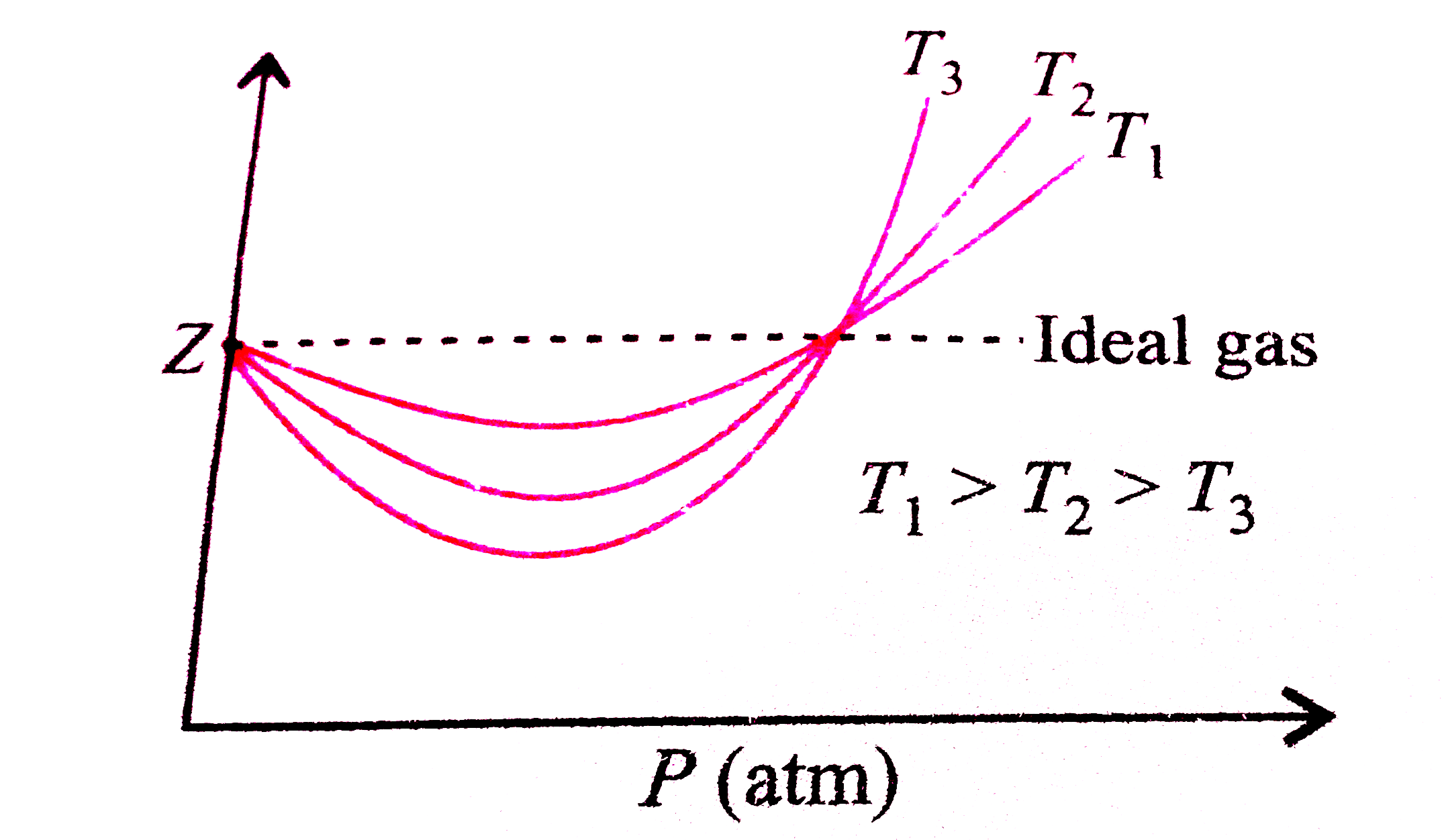A real gas behaves like an ideal gas if its
high pressure and low temperature
low pressure and high temperature
high pressure and high temperature
low pressure and low temperature
The correct Answer is:b
To determine the conditions under which a real gas behaves like an ideal gas, we can follow these steps:
1. Understanding Real vs. Ideal Gas:
- An ideal gas is a hypothetical gas that perfectly follows the gas laws without any exceptions. Real gases, however, have interactions between molecules and occupy space, which can cause deviations from ideal behavior.
2. Identify Conditions for Ideal Behavior:
- Real gases behave like ideal gases under certain conditions. These conditions are primarily related to temperature and pressure.
3. Average Distance Between Gas Molecules:
- For a real gas to behave like an ideal gas, the average distance between gas molecules must be large enough. This occurs when the gas is at low pressure, which allows the molecules to be far apart.
4. Force of Attraction:
- When the average distance between gas molecules is large, the forces of attraction between them become negligible. This means that the intermolecular forces can be considered almost zero.
5. Volume Considerations:
- The actual volume occupied by the gas molecules becomes negligible compared to the volume of the container. This means that the volume occupied by the gas molecules does not significantly affect the overall behavior of the gas.
6. Pressure and Temperature Relationship:
- The conditions under which these effects are observed (negligible forces of attraction and negligible volume) are typically at low pressure and high temperature. Under these conditions, the gas molecules are moving rapidly and are far apart, minimizing interactions.
7. Conclusion:
- Therefore, a real gas behaves like an ideal gas when the pressure is low and the temperature is high.
Final Answer:
A real gas behaves like an ideal gas if its pressure is low and temperature is high.
---
- An ideal gas is a hypothetical gas that perfectly follows the gas laws without any exceptions. Real gases, however, have interactions between molecules and occupy space, which can cause deviations from ideal behavior.
- Real gases behave like ideal gases under certain conditions. These conditions are primarily related to temperature and pressure.
- For a real gas to behave like an ideal gas, the average distance between gas molecules must be large enough. This occurs when the gas is at low pressure, which allows the molecules to be far apart.
- When the average distance between gas molecules is large, the forces of attraction between them become negligible. This means that the intermolecular forces can be considered almost zero.
- The actual volume occupied by the gas molecules becomes negligible compared to the volume of the container. This means that the volume occupied by the gas molecules does not significantly affect the overall behavior of the gas.
- The conditions under which these effects are observed (negligible forces of attraction and negligible volume) are typically at low pressure and high temperature. Under these conditions, the gas molecules are moving rapidly and are far apart, minimizing interactions.
- Therefore, a real gas behaves like an ideal gas when the pressure is low and the temperature is high.
A real gas behaves like an ideal gas if its pressure is low and temperature is high.
Topper's Solved these Questions
- GASEOUS STATEBOOK - NARENDRA AWASTHI ENGLISHCHAPTER - GASEOUS STATEEXERCISE - Level 2
30 Videos
- GASEOUS STATEBOOK - NARENDRA AWASTHI ENGLISHCHAPTER - GASEOUS STATEEXERCISE - Level 3 Passage 1
4 Videos
- ELECTROCHEMISTRYBOOK - NARENDRA AWASTHI ENGLISHCHAPTER - ELECTROCHEMISTRYEXERCISE - Subjective problems
14 Videos
- IONIC EEQUILIBRIUMBOOK - NARENDRA AWASTHI ENGLISHCHAPTER - IONIC EEQUILIBRIUMEXERCISE - Subjective problems
1 Video
Similar Questions
Knowledge Check
The molecules of a gas are in constant (i) _______ motion . They move in (ii) ________ lines until they collide with another molecule . The collisions are perfectly (iii) _________ in nature . A real gas behaves as an ideal gas at (iv) _________ temperature and (v) _________ pressure .
A (i) (ii) (iii)(iv)(v)randomverticalstraighthighlowB (i) (ii) (iii)(iv)(v)straightrandomelasticlowhighC (i) (ii) (iii)(iv)(v)randomstraightelastichighlowD (i) (ii) (iii)(iv)(v)idealroundelasticlowhigh
Statement-1: A real gas behaves as an ideal gas at high temperature and low pressure .
Statement-2: Liquid state of an ideal gas is impossible.
View SolutionStatement-1: A reas gas nearly behaves like an ideal gas at low pressure and high temperature.
Statement-2: If the ratio of translational and rotational degree of freedom is 1.5 the gas must be diatomic
Statement-3: Most probable speed of a gas is proportional to absolute temperature of the gas.
View SolutionFor an ideal gas :
View SolutionFor an ideal gas :
View SolutionA gas behave most like an Ideal gas under conditions of
View SolutionBoyle's temperature or Boyle point is the temperature at which a real gas starts behaving like an ideal gas over a particular range of pressure. A graph is plotted between compressibility factor Z and pressure P.

What is the deviation of real gas from ideal behaviour in terms of compressibility factor , Z ?
View SolutionAssertion An actual gas behaves as an ideal gas most closely at low pressure and high temperature.
Reason At low pressure and high temperature, real gases obey the gasl laws.
View Solution